Science and Art as Partners in Space: A New Frontier for Humanity
Astronomical Art is the aspect of Space Art devoted to visualizing the wonders of outer space. A major emphasis of such art is the space environment as a new Frontier for Humanity. Many other works portray alien worlds, extremes of matter such as black holes, and concepts arising from inspiration derived from astronomy. (Wikipedia)
We have all heard of Black Holes even if we are not sure what they are. This year, for the first time, we can now see what a black hole looks like. The Event Horizon Telescope, a planet-scale array of eight ground-based radio telescopes forged through international collaboration, captured this image of the supermassive black hole in the center of the galaxy M87 and its shadow. (space.com)
It's breath taking isn't it!
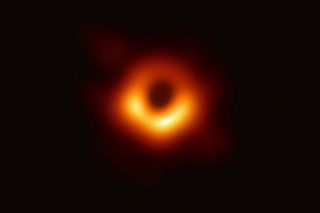
Astronomical art was largely pioneered in the 1940s and 50s by the abilities of Chesley Bonestell to solve formidable perspective problems, paint with the eye of a master matte artist to create a realistic visual impression, and to seek out the greatest experts in the fields which fascinated him. (Wikipedia)
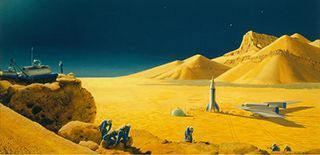
It will shock you to know that Chesley Bonestell was born in 1888. Tracy Staedter in a brief article Chesley Bonestell the Father of Modern Astronomical Art said: Some say art imitates life. But when it comes to the modern space age, life imitated art. That’s because years before the first human rocketed into orbit, before a spaceship landed on the moon, before a rover traversed Mars, before a probe imaged Saturn’s rings, Chesley Bonestell painted it. His imaginative astronomical art depicting unexplored worlds — and the spacecrafts necessary to go there — stirred the collective awe of 20th century space enthusiasts. In the book, “The Art of Chesley Bonestell,” authors Ron Miller and Frank C. Durant, III, relate how some of the most famous science popularizers, like cosmologist Carl Sagan and science fiction writer Sir Arthur C. Clarke, lauded Bonestell. Joseph Chamberlain, director of Chicago’s Adler Planetarium from 1968 to 1991, said that without Bonestell, the NASA era might not have happened at all. (http://now.northropgrumman.com)
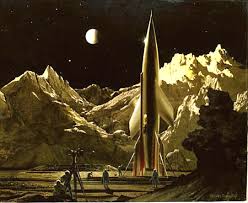
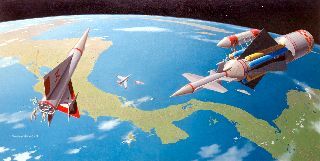
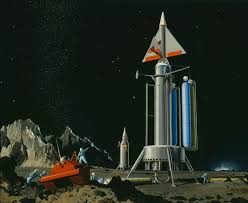
Chesley Knight Bonestell, Jr. (1888-1986) was an American painter, designer and illustrator. His paintings inspired the American space program, and they have been (and remain) influential in science fiction art and illustration. A pioneering creator of astronomical art, along with the French astronomer-artist Lucien Rudaux, Bonestell has been dubbed the Father of Modern Space art. We will look at the life and works of Lucien Rudaux in a day or so.
Bonestell was born in San Francisco, California. His first astronomical painting was done in 1905. After seeing Saturn through the 12-inch (300 mm) telescope at San Jose's Lick Observatory, he rushed home to paint what he had seen. The painting was destroyed in the fire that followed the 1906 earthquake. Last year I wrote a blog on Effie Charlton-Fortune who also lost nearly all of her paintings in the 1906 earthquake. It is a testament to the strength and passion that artists like Bonestell and Charlton-Fortune after suffering the loss of their artistic works, remained dedicated to their craft.
Below is a remarkable painting of Saturn created by Bonestell in 1943. It is titled Saturn as seen from Mimas. Mimas, also designated Saturn I, is a moon of Saturn which was discovered in 1789 by William Herschel. It is named after Mimas, a son of Gaia in Greek mythology. (Wikipedia)
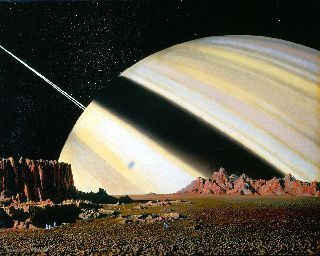
Bonestell's work helped inspire many in the post war era to think about space travel, which seemed fantastic before the V-2 rocket. To this day numerous artists assist in bringing ideas into presentable form in the space community, both in portraying the latest ideas on how to leave Earth and in showing wonders awaiting us out there (Wikipedia)
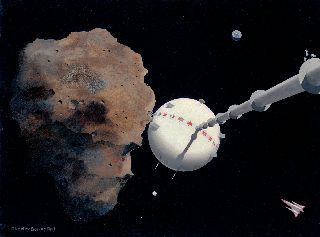
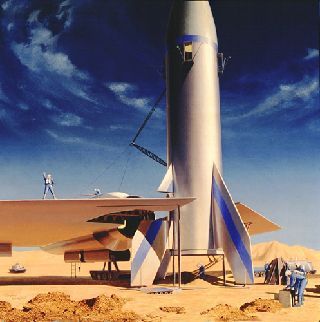
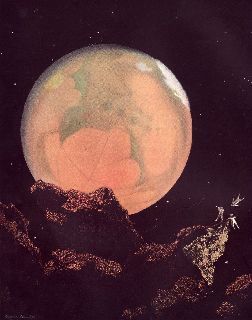
Saturn remained with Bonestell as his favoured subject and became the center of dozens of his works. His iconic piece, Saturn as Seen from Titan puts the viewer on Saturn’s moon, Titan. The Ringed Planet hangs on the horizon, appearing both colossal and delicate, thinly lit by a setting sun. (Credit: northropgrumman.com)
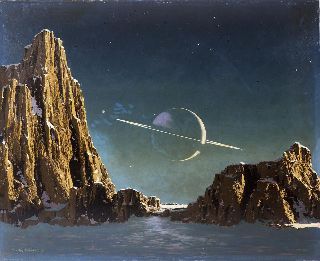
This image of Saturn and its mesmerizing beauty roused the emotions of so many young people, it was dubbed the painting that launched a thousand careers said Ron Miller in his article The Artist Who Helped Invent Space Travel (Gizmodo.com)
Follow this link to see more images of the paintings created by Chesley Bonestell.
